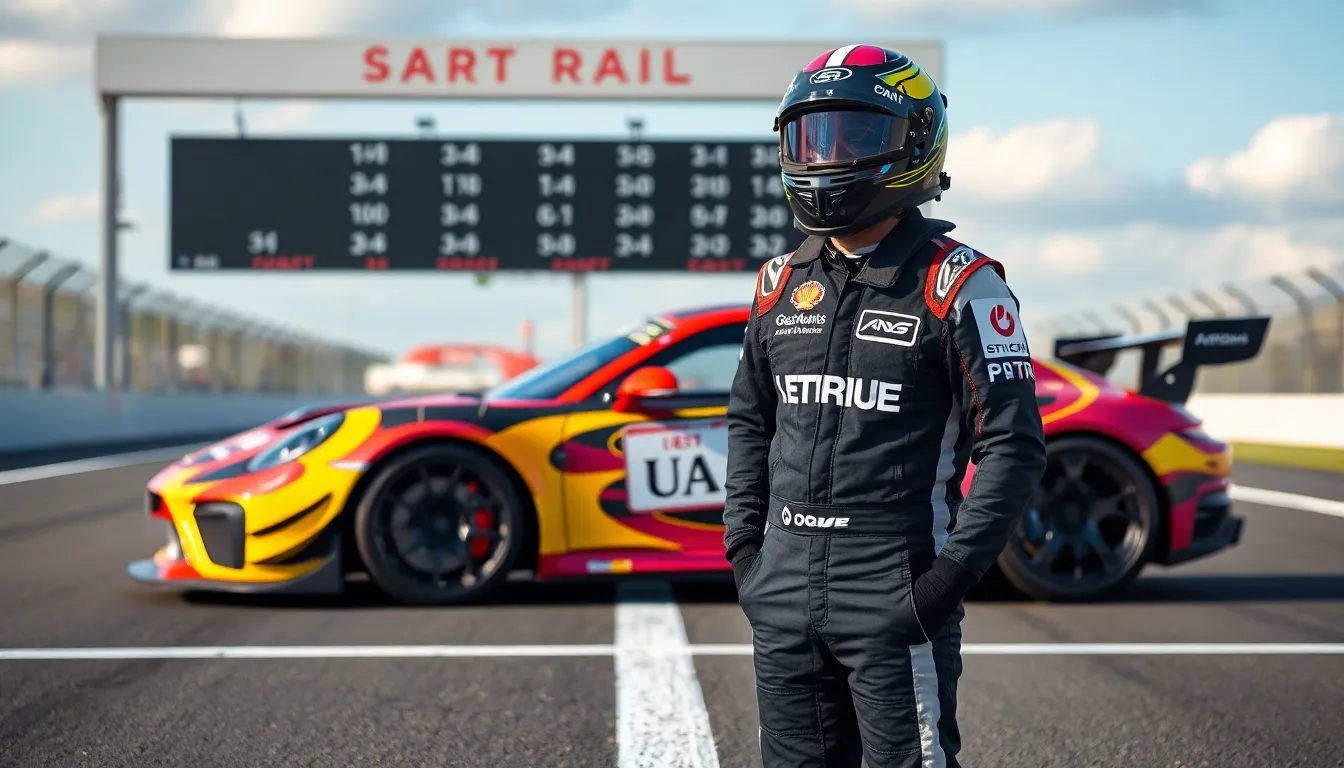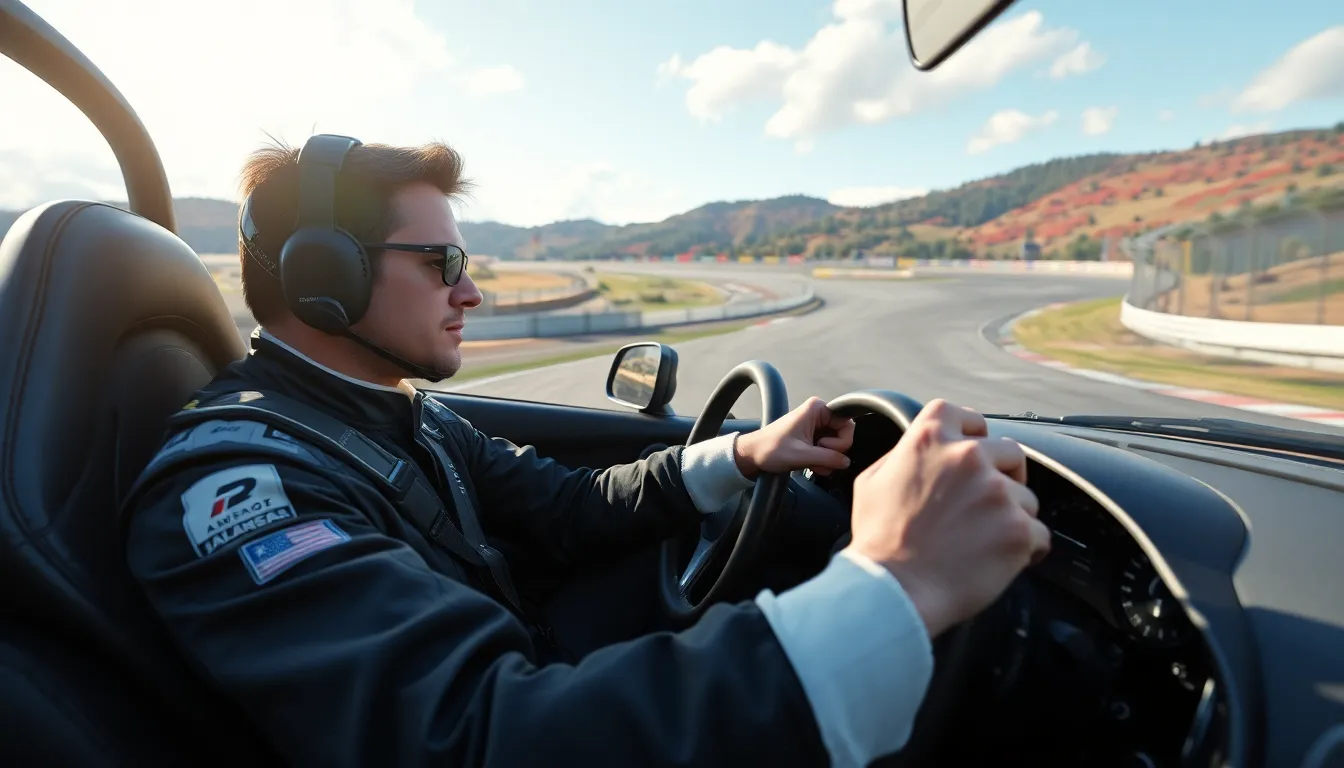Table of Contents
ToggleIn the world of racing, qualifying isn’t just a formality; it’s the battleground where champions are forged. Gran Turismo qualifying takes this concept to a whole new level, blending adrenaline with strategy. Picture this: your heart races as you navigate hairpin turns, trying to squeeze out every last millisecond. It’s not just about speed; it’s about finesse, precision, and maybe a little bit of luck—like finding that last slice of pizza at a party.
But let’s be honest, qualifying can feel like trying to assemble IKEA furniture without the instructions. With a myriad of tracks and cars to choose from, the pressure mounts. Will you rise to the occasion or end up in a wall? Buckle up, because diving into the nuances of Gran Turismo qualifying is not just a ride; it’s an exhilarating journey that could lead to glory or a spectacular crash.
Overview of Gran Turismo Qualifying
Gran Turismo qualifying serves as a critical phase in the racing experience, determining the starting positions for each event. Focus often shifts towards mastering specific tracks, where every turn requires precision. Drivers rely on optimal vehicle settings and tire choices to gain an edge against competitors.
Strategies play a vital role in this process. Drivers analyze track layouts and weather conditions to adjust their racing style accordingly. Understanding braking points and acceleration zones can make or break a lap time, showcasing the need for both skill and strategy.
The scoring system varies, with points awarded based on qualifying position in many events. Achieving a top spot can lead to significant advantages in races, such as avoiding early collisions or securing a clear track. Performance in qualifying rounds directly impacts a driver’s championship standing.
Pressure mounts during these sessions. The environment, combined with the anticipation of competitors, intensifies the challenges. Drivers often experience stress while striving to balance speed with control. Each lap presents an opportunity to refine techniques, helping to achieve a competitive edge.
Results from qualifying determine more than just starting positions. They provide insights into driver performance and car setup, which are crucial for race day. Analyzing previous runs can reveal patterns and highlight areas for improvement. Overall, Gran Turismo qualifying embodies a blend of skill, strategy, and psychological fortitude in the pursuit of racing excellence.
Importance of Qualifying in Gran Turismo

Qualifying establishes a foundation for success in Gran Turismo. The significance of this phase cannot be overlooked, as it directly influences race outcomes.
Competitive Edge
Qualifying offers drivers a competitive edge by determining starting positions. A strong qualifying performance often leads to a front-row grid spot, minimizing the risk of early collisions. Optimal vehicle settings and tire selections provide additional advantages, allowing drivers to tailor their strategies. Understanding track layouts can enhance a driver’s ability to navigate challenges effectively. Analyzing rivals’ performance also plays a crucial role in honing competitive strategies. Consistently achieving high qualifying ranks helps build confidence, fostering a mindset for future races. By focusing on precision during qualifying, a driver sets the stage for a successful race.
Race Day Performance
Race day performance heavily relies on the outcomes of qualifying sessions. Insights gained from qualifying laps provide valuable information for fine-tuning car setups. Knowing specific braking points and acceleration zones enhances drivers’ adaptability during the race. Consistent qualifying results reveal a driver’s skill level and readiness for competition. The psychological pressure experienced during qualifying often sharpens focus, translating to better race execution. Achieving a top qualifying position alleviates the stress of maneuvering through traffic, allowing drivers to adopt optimal racing strategies. Ultimately, the importance of qualifying in Gran Turismo extends beyond mere statistics; it shapes a driver’s approach on race day.
Types of Qualifying Formats
Various qualifying formats exist in Gran Turismo, each designed to achieve competitive fairness and excitement. Time trials and group qualifying stand as two prominent methods, shaping how races begin.
Time Trials
Time trials focus on individual performance. Each driver races alone on the track, aiming for the fastest lap time. Precision is crucial, as even minor mistakes can lead to significant time losses. Drivers must optimize their vehicle settings and tire choices to maximize lap efficiency. Analyzing track layouts and braking points serves as key tactics during practice. Qualifying results from time trials directly influence starting positions, making every lap count. Strong performances can earn front-row grid spots, enhancing a driver’s chances for success in the main race.
Group Qualifying
Group qualifying emphasizes collective performance among multiple drivers. In this format, several competitors race simultaneously, which introduces additional challenges such as traffic and strategic overtaking. Drivers often adjust their strategies based on rivals’ positions to secure optimal lap times. The dynamic environment requires real-time decision-making, as drivers must navigate both speed and surroundings. Group qualifying tends to produce close results, creating excitement among participants and spectators alike. Ultimately, results from this format reflect both skill and adaptability under pressure.
Strategies for Successful Qualifying
Gran Turismo qualifying requires a blend of technical skill and mental focus. Strategic approaches yield significant advantages on the track.
Car Setup
Adjusting car settings can enhance performance during qualifying sessions. Focus on optimizing gear ratios for better acceleration. Tire selection greatly impacts grip and stability; changing tires based on track conditions is crucial. Fine-tuning suspension settings also improves handling, especially during sharp turns. Drivers often test various setups in practice sessions to determine the most effective configuration. Additionally, weight distribution affects vehicle response; balancing it correctly can elevate lap times. Each adjustment allows drivers to extract the maximum potential from their cars.
Mental Preparation
Mental readiness plays a significant role in achieving qualifying success. Practicing relaxation techniques helps reduce anxiety before sessions. Visualization of ideal lap performances prepares drivers for high-pressure situations. They often break down courses into segments, allowing for better focus on specific turns. Staying positive and maintaining confidence enhances overall performance and decision-making. Engaging in breathing exercises before qualifying sessions also promotes concentration. Absorbing data from previous races informs strategies and boosts confidence on the track. Fostering a strong mental game ensures drivers perform at their best during the critical qualifying phase.
Gran Turismo qualifying is a pivotal moment in the racing journey that sets the stage for success. The blend of technical skill and mental focus required during this phase cannot be overstated. Mastering vehicle setups and understanding track nuances gives drivers a competitive edge.
The pressure of qualifying not only tests driving abilities but also shapes overall race strategies. Each session offers valuable insights into performance and car adjustments that can make all the difference on race day. By honing their skills and strategies during qualifying, drivers position themselves for a successful racing experience. Ultimately, it’s this intricate dance of precision and strategy that defines the essence of Gran Turismo racing.








